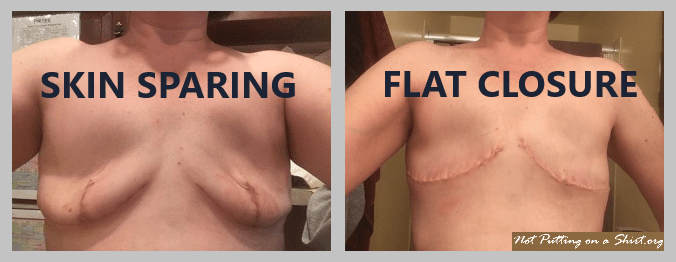Aesthetic Flat Closure and Flat Denial
- Surviving Breast Cancer
- Aug 7, 2022
- 3 min read
By Kim Bowles
President & Founder, NotPuttingonaShirt.org
Every year, 250,000 women are diagnosed with breast cancer in the United States. Despite the prevailing narrative that breast cancer is a disease of older women, roughly 15% of those diagnoses are under age 40. I was 35 years old and nursing my second baby when I was diagnosed.

I felt like I had entered a nightmare world and might never wake up.
And I was one of the lucky ones - 10% of all breast cancer diagnoses are what's called "stage IV de novo" (metastatic breast cancer, or MBC) with no chance of a cure right out of the starting gate. And 30% of early stage breast cancers eventually metastasize. Since my own stage 3 diagnosis, I have watched in horror as handfuls of my MBC sisters have passed away, one by one. It's relentless and every October I urge people to choose to target their BCAM donations towards MBC research by supporting organizations like Metavivor.
After six rounds of chemo, I chose to have a bilateral mastectomy without breast mound reconstruction. I made this choice for two reasons: I wanted to optimize my chances of never having to deal with chemo ever again (BMX), and I wanted to get back to my normal life as quickly as possible (FLAT). Being done in one surgery was critically important to me, so I brought on a plastic surgeon to ensure a smooth flat closure and minimize the risk of needing revision later.
Unfortunately, that's not what I got. On surgery day, as I was lying on the operating table, I heard the plastic surgeon say "I'll just leave a little extra in case you change you mind" (to which I said, "no, make it flat"). I awoke three hours later to pockets of skin remaining on my chest - not smooth and flat like we had agreed. I knew that my chance to be done in one surgery had been stolen from me. I was devastated.
The trauma of making peace with your surgical decision only to wake up to something completely different, is hard to describe. And it happens to women who are already at their most vulnerable, enduring cancer treatment. I struggled for weeks to fully accept what had happened to me. I felt violated, dehumanized, and alone. People would say things to me like "it can be fixed," or "at least they got the cancer," invalidating the trauma.

I decided I wasn't going to stand for it. Over the past three years I have gone from protesting topless on the street (yes, you heard that right) to founding Not Putting on a Shirt, a 501(c)(3) organization that empowers women with tools and resources to protect their choice, and works with institutional stakeholders to build a coalition that will end "flat denial." The fact is that one in twenty women who choose to go flat is denied a flat closure by a surgeon who wants to push them towards breast reconstruction. There are many contributing factors that allow this to continue: paternalism, protectionism, lack of a standard of care, suboptimal reimbursement, and unclear language.
We've made some great progress. Earlier this year, the National Cancer Institute took the historic step of defining the term "aesthetic flat closure" as rebuilding of a smooth, flat chest wall contour. Now patients know exactly what to ask for - and there's no ambiguity about what we have agreed to for unscrupulous providers to leverage against us. The term also enables advocates to push for better training and reimbursement to support providers in developing and delivering an optimal standard of care for women going flat.
If you are facing mastectomy and have decided to go flat, be sure to ask your surgeon for an "aesthetic flat closure" as defined by the National Cancer Institute. Make sure it's in your medical record. And if your surgeon isn't supportive, get a second opinion. This is your body, your life, and your decision. Aesthetic flat closure is a beautiful, healthy, legitimate reconstructive choice!
To learn more about aesthetic flat closure and how to advocate for your choice, access our Flat Friendly Surgeons Directory, print or order brochures to use at your consult, read about our strategic plan and how you can help, and more, visit NotPuttingonaShirt.org.
Website: NotPuttingonaShirt.org
Facebook/IG: @NotPuttingonaShirt
Twitter: @not_shirt













